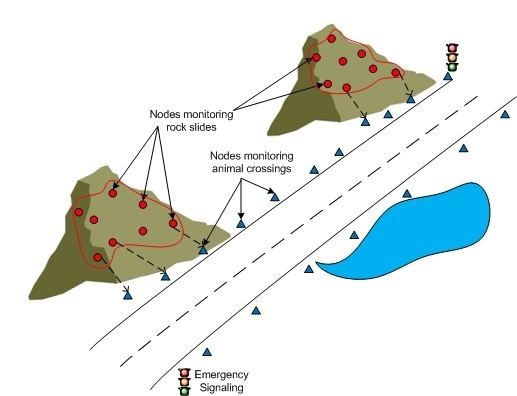 | ||
Virtual sensor networks (VSNs) is an emerging form of collaborative wireless sensor networks. In contrast to early wireless sensor networks that were dedicated to a specific application (e.g., target tracking), VSNs enable multi-purpose, collaborative, and resource efficient WSNs. The key idea difference of VSNs is the collaboration and resource sharing. By doing so nodes achieve application objectives in a more resource efficient way. These networks may further involve dynamically varying subset of sensor nodes (e.g., when the phenomenon migrates sensors that detect the phenomenon changes with time) and/or users (users that are accessing the network changes with time).
A VSN can be formed by providing logical connectivity among collaborative sensors. Nodes can be grouped into different VSNs based on the phenomenon they track (e.g., rock slides vs. animal crossing) or the task they perform. VSNs are expected to provide the protocol support for formation, usage, adaptation, and maintenance of subset of sensors collaborating on a specific task(s). Even the nodes that do not sense the particular event/phenomenon could be part of a VSN as far as they are willing to allow sensing nodes to communicate through them. Thus, VSNs make use of intermediate nodes, networks, or other VSNs to efficiently deliver messages across members of a VSN.
Applications
VSNs are useful in three major classes of applications:
